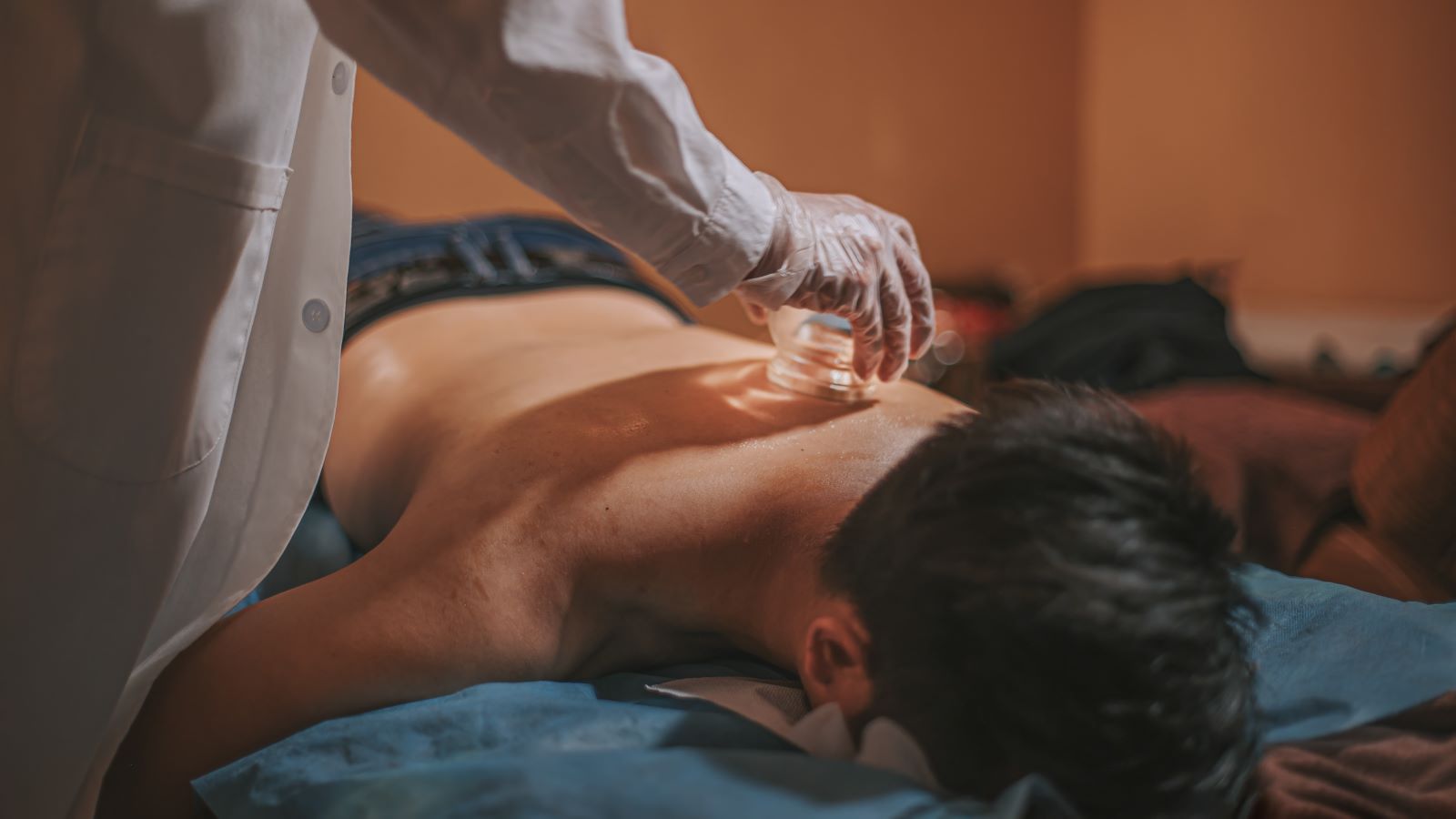<< Back
Does Cupping Actually Work?

October 29, 2025
Cupping therapy isn’t new — it’s been around for thousands of years, with roots in ancient Egypt, China, Greece and the Middle East. But lately, it’s everywhere — from wellness spas to pro athletes’ backs.
People swear by it for loosening tight muscles and soothing sore spots. Others call it a wellness fad.
So what’s the real deal? We asked Stefanie Bourassa, Doctor of Physical Therapy, Sports Medicine Program Manager at the Hartford HealthCare Bone & Joint Institute, to explain what cupping does, where it might help and what to know before you book a session.
How cupping actually works
Cupping starts with a simple setup: special cups placed on your skin to create suction.
“Cupping therapy works by creating localized suction, which helps with blood flow, myofascial tension release and muscle relaxation,” says Bourassa.
That suction is believed to boost blood flow, loosen tight muscles and help with healing.
There are two main types:
- Dry cupping: Cups go on intact skin for suction only.
- Wet cupping: After the first suction, the provider makes small cuts in the skin and reapplies the cups to draw a little blood.
> Related: Can a Cortisone Shot Help With My Joint Pain?
What the research says
Research on cupping is still evolving, but some studies have started to shed light on where it may actually help.
“There’s moderate-quality evidence that cupping may help with certain kinds of chronic pain – especially in the back, neck and knees,” says Bourassa.
Some people report feeling better after cupping for shingles pain, short-term relief for chronic pain and soft tissue recovery in athletes.
“Early research also hints at possible benefits for conditions like metabolic syndrome and ankylosing spondylitis – but the science is still limited,” adds Bourassa.
Possible risks and precautions
Most people walk away from a cupping session with nothing more than temporary bruises or mild soreness.
But it can sometimes cause burns, infection or scarring – and very rarely, more serious complications.
“If you want to try cupping, choose a licensed provider with proper training that uses sterile equipment, especially if wet cupping is involved,” says Bourassa.
> Related: Can Acupressure Mats Really Help With Chronic Pain?
Should I try cupping?
Cupping therapy might help some people, but it’s no magic fix.
“We might recommend cupping as an add-on for chronic pain or acute recovery, as long as the patient understands the limits and risks,” says Bourassa.
It’s not for everyone, though. Skip cupping if you have a bleeding disorder, skin infection, certain heart problems or other specific conditions.
“Cupping can be part of a broader pain management plan, but it shouldn’t replace treatments that are proven to work,” says Bourassa. “If you’re curious, talk to your doctor or physical therapist, to see if it’s a safe option for you.”